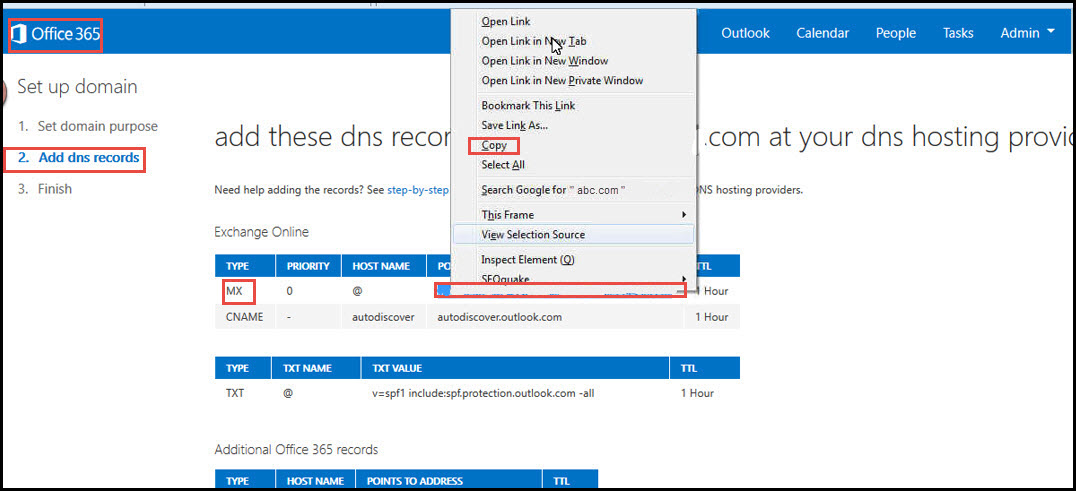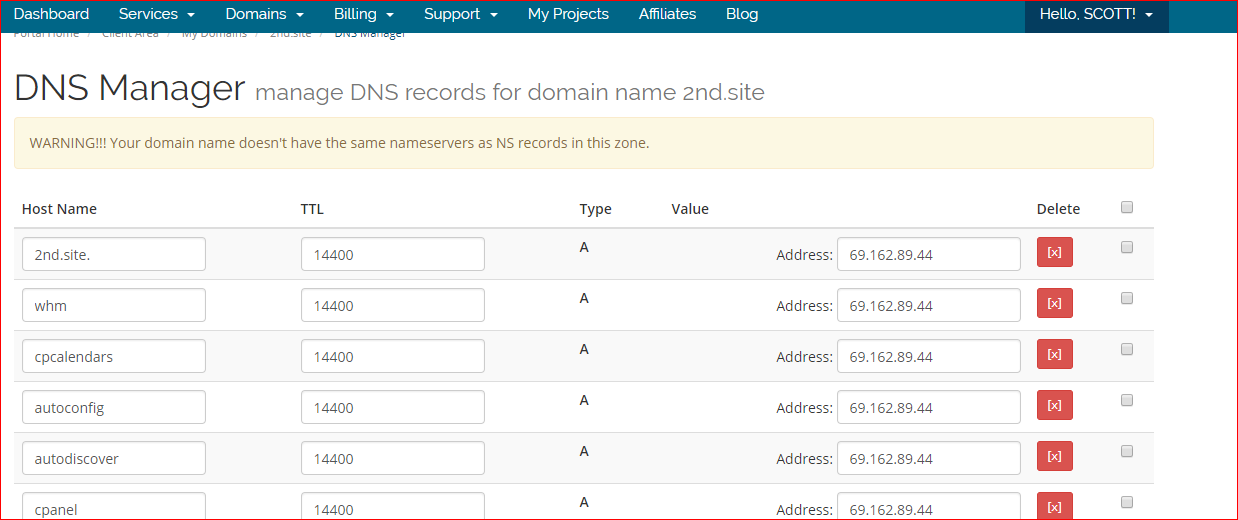

Helps Outlook clients to easily connect to the Exchange Online service by using the Autodiscover service when your company is using Exchange federation. TXT record 2: For example, and associated custom-generated, domain-proof hash text (for example, Y3259071352452626169)

TXT record 1: For example, and associated custom-generated, domain-proof hash text (for example, Y96nu89138789315669824) Used for Exchange federation for hybrid deployment. Sender policy framework (SPF) records work by identifying the servers that are authorized to send email from your domain. Helps to prevent other people from using your domain to send spam or other malicious email.
#OFFICE 365 EMAIL SETTINGS DNS UPDATE#
In the MX records section, choose What do I fix?įollow the directions on this page to update your MX record. In the Action column for your domain, choose Fix issues. Sign in to Office 365, go to Office 365 admin > Domains. Preference/Priority: Lower than any other MX records (this ensures mail is delivered to Exchange Online) - for example 1 or 'low' Note: Once email is flowing to Exchange Online, you should remove the MX records that are pointing to your old system. Sends incoming mail for your domain to the Exchange Online service in Office 365. Autodiscover automatically finds the correct Exchange Server host and configures Outlook for users. Helps Outlook clients to easily connect to the Exchange Online service by using the Autodiscover service. See the External DNS records required for SPF in this article to help you understand what to include in your record.Įmail customers who are using Exchange Federation will also need the additional CNAME and TXT record listed at the bottom of the table. This helps prevent problems like email spoofing and phishing. The TXT record for SPF is used by recipient email systems to validate that the server sending your email is one that you approve. Note: When you change your email to Office 365, by updating your domain's MX record, ALL email sent to that domain will start coming to Office 365.ĭo you just want to switch a few email addresses to Office 365? You can Pilot Office 365 with a few email addresses on your custom domain. The MX record tells other mail systems where to send email for your domain. The Autodiscover record allows client computers to automatically find Exchange and configure the client properly. The three primary records that all customers should use are the Autodiscover, MX, and SPF records. The Office 365 domain setup wizard provides the values that you use to create this record.Įxternal DNS records required for email in Office 365 (Exchange Online)Įmail in Office 365 requires several different records. TXT Value: A text string provided by Office 365 Host: (or, for some DNS hosting providers, your domain name) Used by Office 365 to verify only that you own your domain. If present and your Office 365 is not operated by 21Vianet, users on your custom domain will get a " custom domain isn't in our system" error and won't be able to activate their Office 365 license. Note: This CNAME only applies to Office 365 operated by 21Vianet. Used by Office 365 to direct authentication to the correct identity platform. The second required record is to prove you own your domain name. The first CNAME record ensures that Office 365 can direct workstations to authenticate with the appropriate identity platform. External DNS records required for Office 365 (core services)Įvery Office 365 customer needs to add two records to their external DNS. To see a customized list of the Office 365 DNS records for your domain, sign in to Office 365 and Gather the information you need to create Office 365 DNS records. The sections below are organized by service in Office 365. Having a single MX record that directs email to one mail system removes many potential problems. You can have multiple MX records however, that can cause problems for mail delivery. The important thing to remember is that you can only have a single SPF record for your domain. We've updated our SPF records guidance at the end of this article. Often the SPF and MX records are the hardest to figure out. Go back to Network planning and performance tuning for Office 365. You will need to select which records apply to your organization and fill in the appropriate values. Sticking around to use the reference list for your own custom deployment? The below list should be used as a reference for your custom Office 365 deployment. Need step-by-step help to add these records at your domain's DNS host, such as GoDaddy or eNom? Find links to step-by-step instructions for many popular DNS hosts.

Want to see a customized list of DNS records for your Office 365 organization? You can find the info you need to create Office 365 DNS records for your domain in Office 365.


 0 kommentar(er)
0 kommentar(er)
